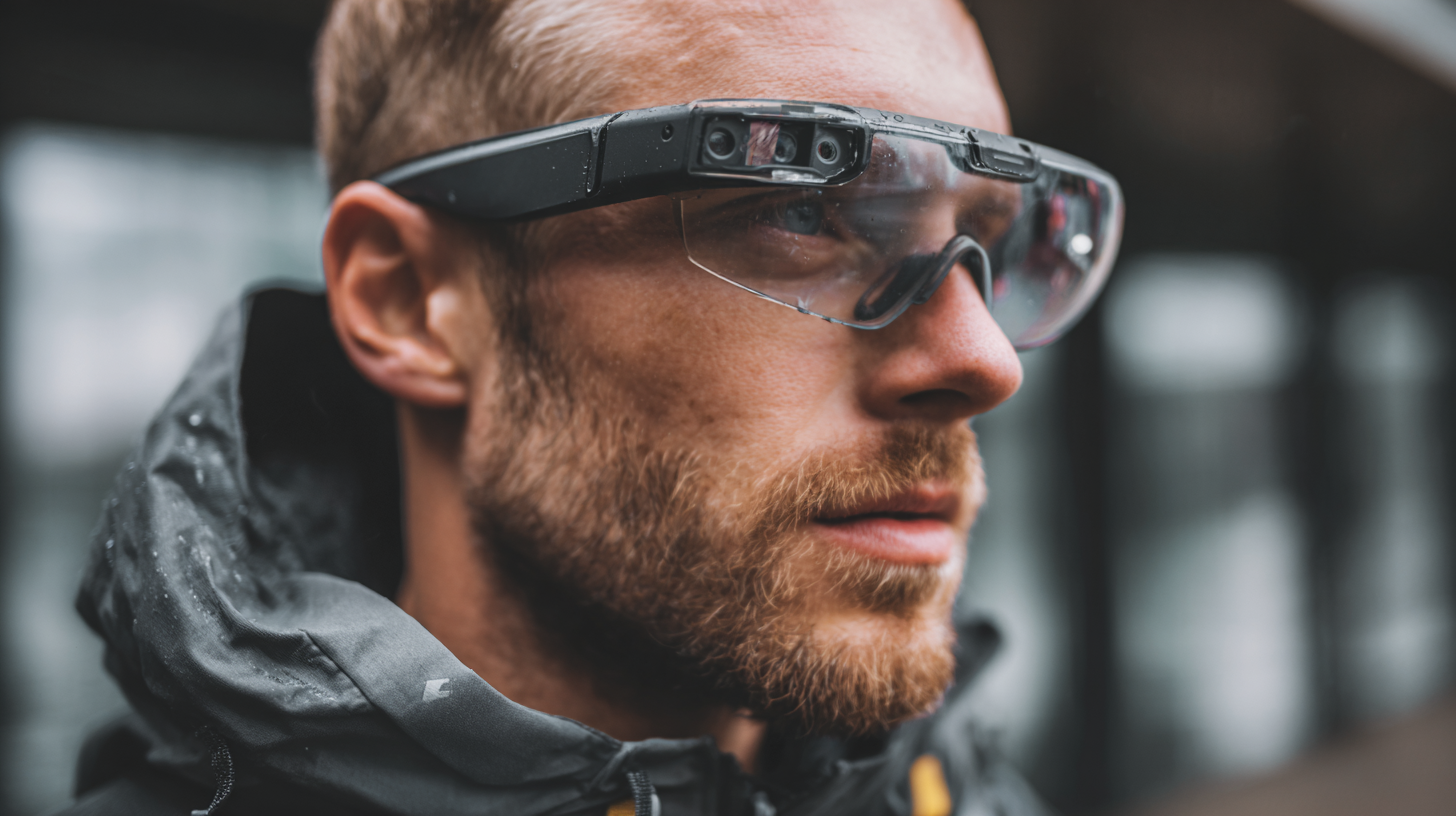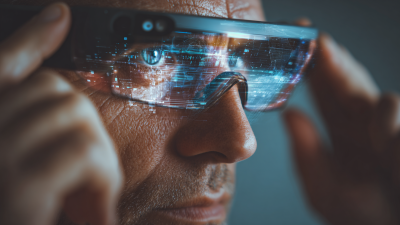 +86-13613020876
+86-13613020876



As technology advances, Smart Glasses are emerging as a pivotal component in the evolution of augmented reality (AR) experiences. According to a recent report by IDC, the global smart glasses market is projected to reach $10 billion by 2024, driven by innovations in user interface and functionality. These sophisticated devices are not only enhancing how users interact with digital content but also revolutionizing industries from healthcare to entertainment.

The ability to overlay digital information onto the physical world offers unprecedented opportunities for immersive training, real-time data access, and enriched consumer experiences. As companies like Google and Microsoft invest heavily in this space, the integration of Smart Glasses into everyday life seems imminent, paving the way for a new era where the boundaries between the virtual and physical worlds continue to blur.
 Smart glasses represent a significant leap in technology, merging the digital world with our physical surroundings to create immersive augmented reality (AR) experiences. At their core, smart glasses utilize advanced optics and sensors to overlay digital information onto the wearer’s visual field. This innovation allows users to access information hands-free, enhancing tasks from navigation to remote collaboration in real-time. Understanding how these devices operate is essential to fully appreciate their potential, which lies not only in their hardware but also in the software that powers applications ranging from gaming to industrial use.
Smart glasses represent a significant leap in technology, merging the digital world with our physical surroundings to create immersive augmented reality (AR) experiences. At their core, smart glasses utilize advanced optics and sensors to overlay digital information onto the wearer’s visual field. This innovation allows users to access information hands-free, enhancing tasks from navigation to remote collaboration in real-time. Understanding how these devices operate is essential to fully appreciate their potential, which lies not only in their hardware but also in the software that powers applications ranging from gaming to industrial use.
Tip: When using smart glasses, it’s essential to maintain awareness of your environment. Use caution, especially in crowded spaces, to ensure safety while navigating augmented reality experiences.
Moreover, smart glasses are designed to be intuitive, integrating voice commands and gesture control for seamless interaction. This user-friendly approach ensures that even those who are not tech-savvy can engage with AR content effectively. As the technology continues to evolve, the possibilities for its application are boundless, including in fields such as education, entertainment, and healthcare.
Tip: Always keep your device updated to benefit from the latest features and security enhancements, ensuring a smooth and secure augmented reality experience.
Smart glasses are at the forefront of revolutionizing augmented reality (AR) experiences, thanks to their innovative features that cater to both consumers and professionals. One key feature is the integration of high-resolution displays, which allow users to see digital content overlaid onto the real world with exceptional clarity. This transparency not only enhances visual interaction but also ensures that essential information is always accessible, whether for navigation, gaming, or training purposes. Moreover, the advanced optics in these devices provide a more immersive experience by creating a seamless blend between virtual objects and the physical environment.
Another significant aspect of smart glasses is their ability to incorporate voice recognition and gesture control, enabling users to interact with digital interfaces effortlessly. This hands-free functionality is especially beneficial in scenarios where multitasking is essential, such as in industrial settings or during complex procedures in healthcare. Additionally, the connectivity features, including Bluetooth and Wi-Fi, allow for instant access to real-time data and updates, further enriching the user's experience. As these key features continue to evolve, smart glasses are set to redefine how we engage with augmented reality, making it more intuitive and integrated into our daily lives.
Smart glasses are at the forefront of a technological revolution, seamlessly integrating with everyday devices to enhance augmented reality (AR) experiences. These innovative wearables allow users to access information, communicate, and interact with their environment in real-time, all while maintaining a hands-free experience. By connecting with smartphones, smartwatches, and other devices, smart glasses can deliver notifications, navigation instructions, and live updates directly in the user’s line of sight, making them a vital tool for personal and professional use.
Moreover, the compatibility of smart glasses with common applications fosters a smoother user experience. For example, with the integration of voice commands and gesture control, users can easily switch between tasks, such as checking messages, making calls, or browsing the internet without the need to reach for a phone. As smart glasses become more integrated with popular software platforms, they offer endless possibilities for productivity and creativity, transforming the way we interact with both the digital and physical worlds. This evolution not only enhances convenience but also encourages a more immersive engagement with our surroundings, paving the way for the future of augmented reality.

Smart glasses are emerging as a transformative technology across various industries, fundamentally reshaping how professionals interact with digital information in real-time. According to a report by IDC, the global smart glasses market is projected to grow from $1.38 billion in 2021 to over $9 billion by 2026, representing a compound annual growth rate (CAGR) of 43.1%. This rapid growth is largely driven by advancements in augmented reality (AR) capabilities, making smart glasses more practical for tasks in sectors such as healthcare, manufacturing, and logistics.
In healthcare, smart glasses are being utilized to assist surgeons during complex procedures by overlaying critical patient information and 3D models directly in their field of vision. Research from Frost & Sullivan indicates that the use of AR in surgical environments can reduce operation times by as much as 20%. Similarly, in manufacturing, companies like Boeing have implemented smart glasses to improve efficiency on assembly lines, which has resulted in a significant 25% reduction in wiring installation time. Such applications illustrate how smart glasses are not merely a gadget but a revolutionary tool that enhances productivity and accuracy in various professional contexts.
As we delve into the future of augmented reality (AR), smart glasses are set to play a pivotal role in transforming our daily interactions with digital content. According to a report by MarketsandMarkets, the global AR market is projected to reach $340.16 billion by 2028, growing at a compound annual growth rate (CAGR) of 43.8%. This rapid growth indicates increasing consumer interest and technological advancements in AR devices, particularly smart glasses. Companies like Microsoft and Google are already leading the way, pushing the boundaries of what these devices can offer, from hands-free navigation to enhanced gaming experiences.
Looking ahead, we can expect significant innovations that will enhance user experience and functionality. For instance, AR glasses are anticipated to incorporate artificial intelligence (AI) and machine learning capabilities to provide personalized experiences. A report from IDC suggests that by 2024, AR headsets will integrate more sophisticated imaging capabilities, enabling real-time translations and overlays of digital information onto physical objects. These developments not only emphasize the growing importance of smart glasses in everyday life but also their potential to redefine industries such as education, healthcare, and retail, thereby creating immersive environments that enrich user interactions with technology.






